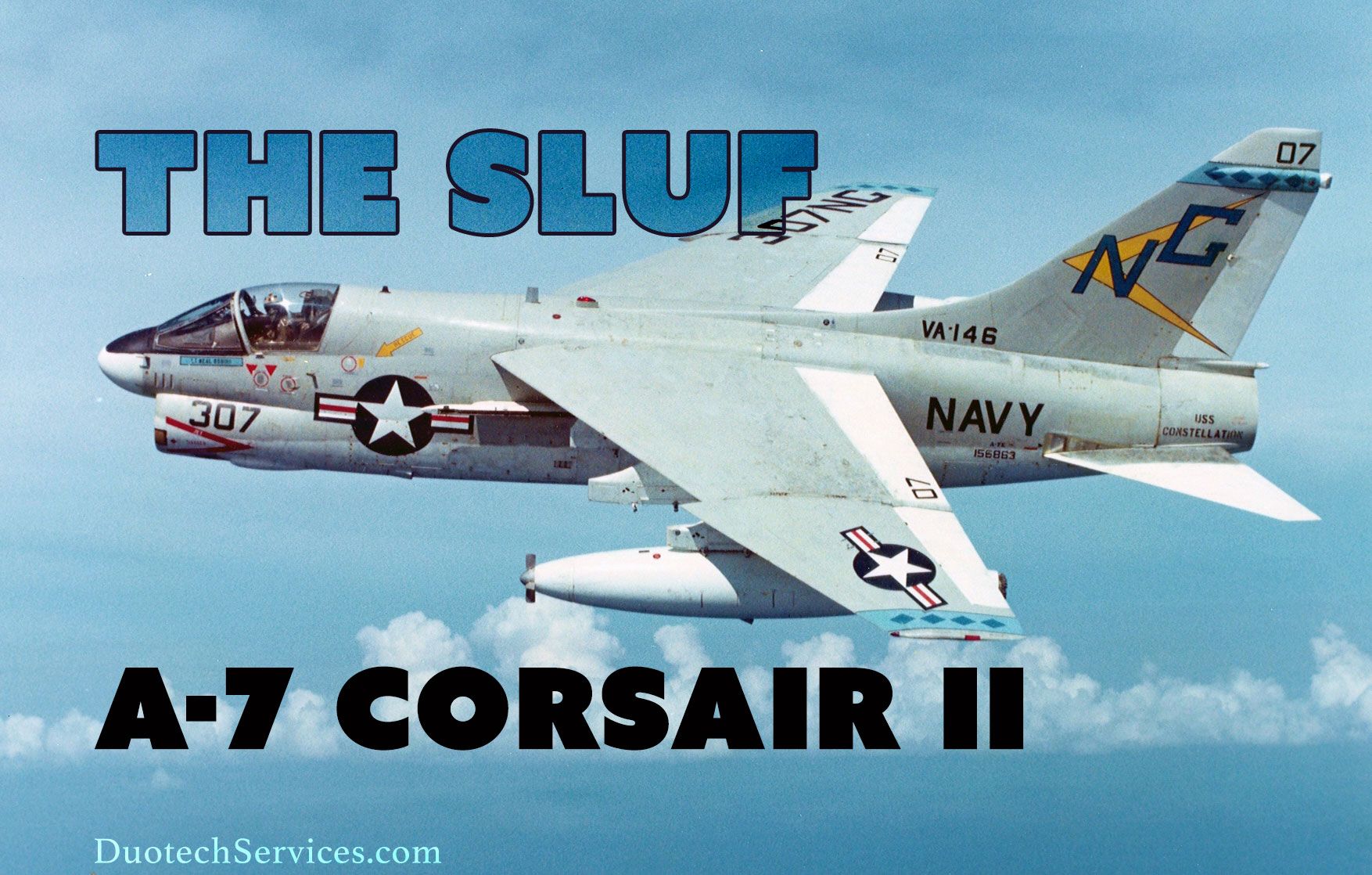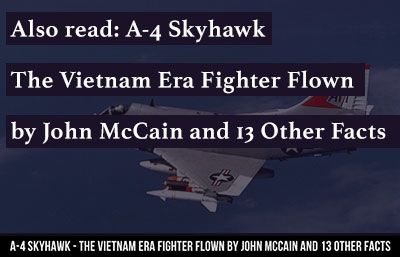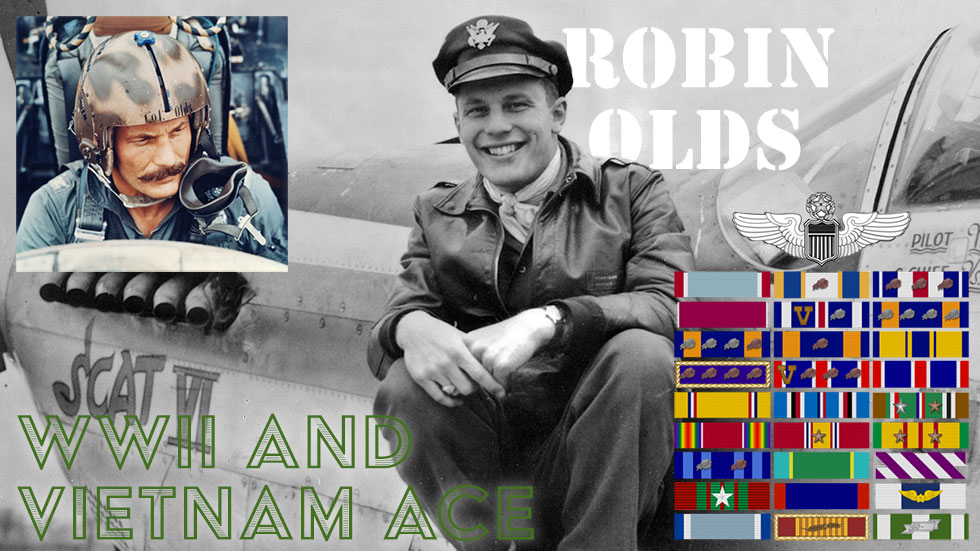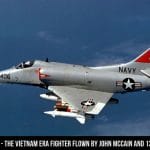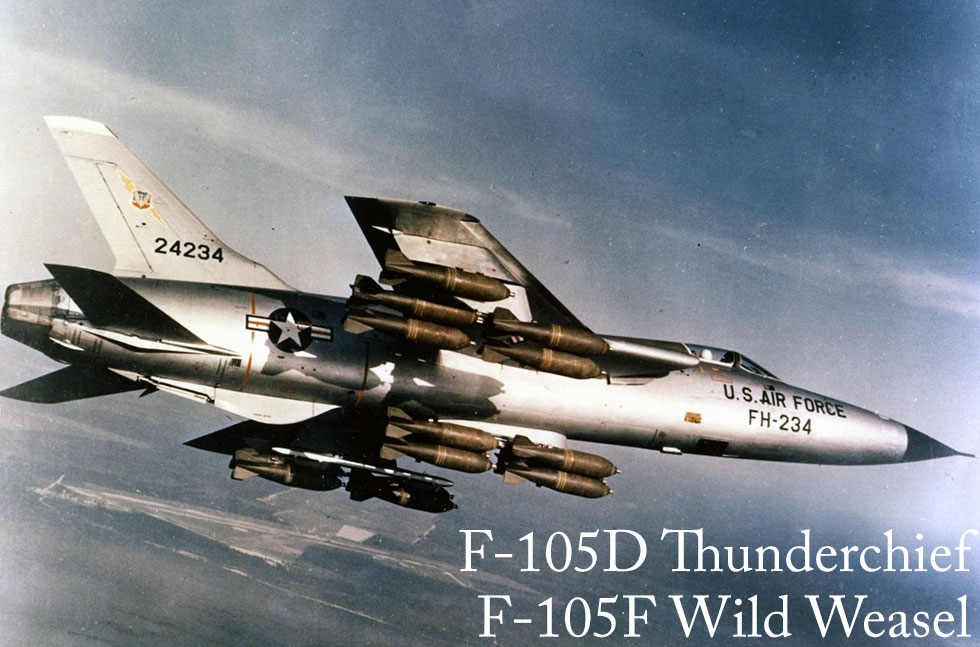The A-4 Skyhawk was a single-seat delta wing subsonic jet-powered carrier-capable aggressor aircraft flown by the U.S. Navy and Marine Corps. It was instrumental during the Vietnam War, launching from carriers stationed at Yankee Station in the South China Sea just outside the Gulf of Tonkin. One particular A-4 was flown by a U.S. Navy pilot named Lieutenant John McCain, who would become a POW during the war and eventually a United States Senator.
During the Vietnam War, the United States looked to replace the A-4 with a carrier-capable aircraft that could carry a much heftier weapons load. The Corsair II’s design was based on the supersonic F-8 Crusader, also a Vietnam era carrier-capable air superiority fighter. The A-7 would be shorter and stubbier than the F-8 and had a top speed of only 690 mph versus the supersonic F-8 at 1,000 mph. Like the Crusader, the A-7 would have a high wing, low horizontal tail, a chin inlet, and stubby landing-gear legs.
Though originally developed and introduced into the United States Navy in 1966, the A-7 would be adopted by the United States Air Force and Air National Guard in the early 1970s. There were 1,569 A-7 Corsair II aircraft built. Its final model, the A-7E, had 535 produced before its final production representative was delivered in 1983. The A-7 Corsair II would become better known as SLUF, or Short Little Ugly Fellow, by the pilots and crew who maintained it.
The A-7E had a single pilot seat while the TA-7C trainer had two seats. It had a top speed of 721 mph, just under Mach-1. With its single non-afterburning turbofan engine producing 15,000 lbf of thrust, the Corsair II had a range of 2,280 miles and a service ceiling of 43,000 ft. Though the A-7 Corsair did not have a speed advantage over the A-4, it did double the weapons payload capability and possessed a much greater range. Along with its internally mounted M61A1 20mm six-barrel cannon with 1018 rounds, the A-7 could carry 15,000 lbs of ordnance payload.
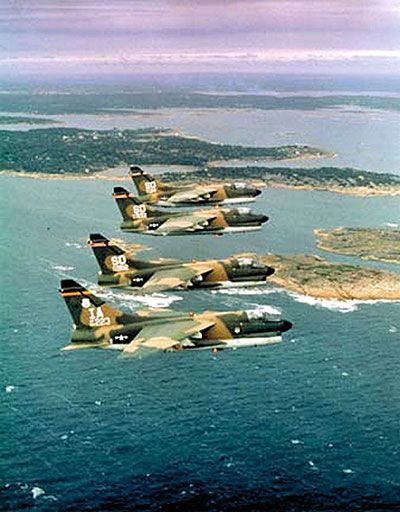
A-7 Corsair II aircraft of the Iowa (IA) and South Dakota (SD) Air National Guard flying near RAF Waddington, UK. These aircraft were deployed to the United Kingdom from 21 August through 12 September 1979 for NATO operation CORNET Stallion
The A-7 was a very effective hunter during the Vietnam War. Pilots would brag on the A-7 being easy to fly. It had an incredible accuracy for putting its large payload of bombs on target. It also had the lowest loss rate of any aircraft in Vietnam. Coupled with a price tag of just over a million dollars each, the A-7A would prove to be not only a very cost-efficient platform but also a superior weapon for combat duty.
Maintenance crew members also loved the little attack aircraft because it was very easy to maintain. As an A-7 Corsair II maintainer in the United States Air Force Air National Guard (ANG), Fred Stubbs, Staff Sgt, Arizona ANG (87-92) held nothing but praise for the light attack bomber.
Stubbs stated, “Both the Corsair A-Model (single-seater) and the B-Model (2 seaters) were great airplanes, very versatile and well-liked by the pilots. From a mechanic’s point of view, the A-7 was very easy to maintain. My favorite thing to do would be to take it to the trim pad to check the aircraft for any defects or leaks after a full inspection to make sure it was ready for a test flight. As good as an aircraft as it was, unfortunately, the A-7 was phased out by my unit and replaced with the F-16.”
As with many other single-purpose style combat aircraft, the A-7 would find it’s future limited as the Department of Defense shifted toward multi-role, supersonic fighter/attack and stealth aircraft. The U.S. Navy began to replace the Corsair II with the new multi-role supersonic F-18 Hornet. The Air Force and Air National Guard would trade their A-7s for the multi-role supersonic F-16 Fighting Falcon.
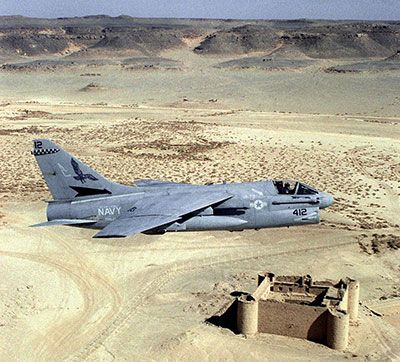
A-7E from VA-72 flying over the Saudi desert during Operation Desert Shield
Just after Desert Storm in 1991, the Navy retired the A-7 and the Air National Guard soon followed in 1993. The Portuguese Air Force retired their A-7s in 1999 while Greece (Hellenic Air Force) did the same on October 17, 2014. A final flight was held during this closing ceremony to celebrate the A-7 Corsair II. For more on the final flight of Greece’s A-7 Corsair II, read this article below.
The A-7 Corsair II Finally Takes Its Last Flight After 49 Years
https://foxtrotalpha.jalopnik.com/the-a-7-corsair-ii-has-finally-takes-its-last-flight-af-1651178309
If you enjoyed this #JetFriday article, share it on your social media channels for your family and friends. If you’re like us and love jet aircraft, check out more of our Jet Friday posts.

